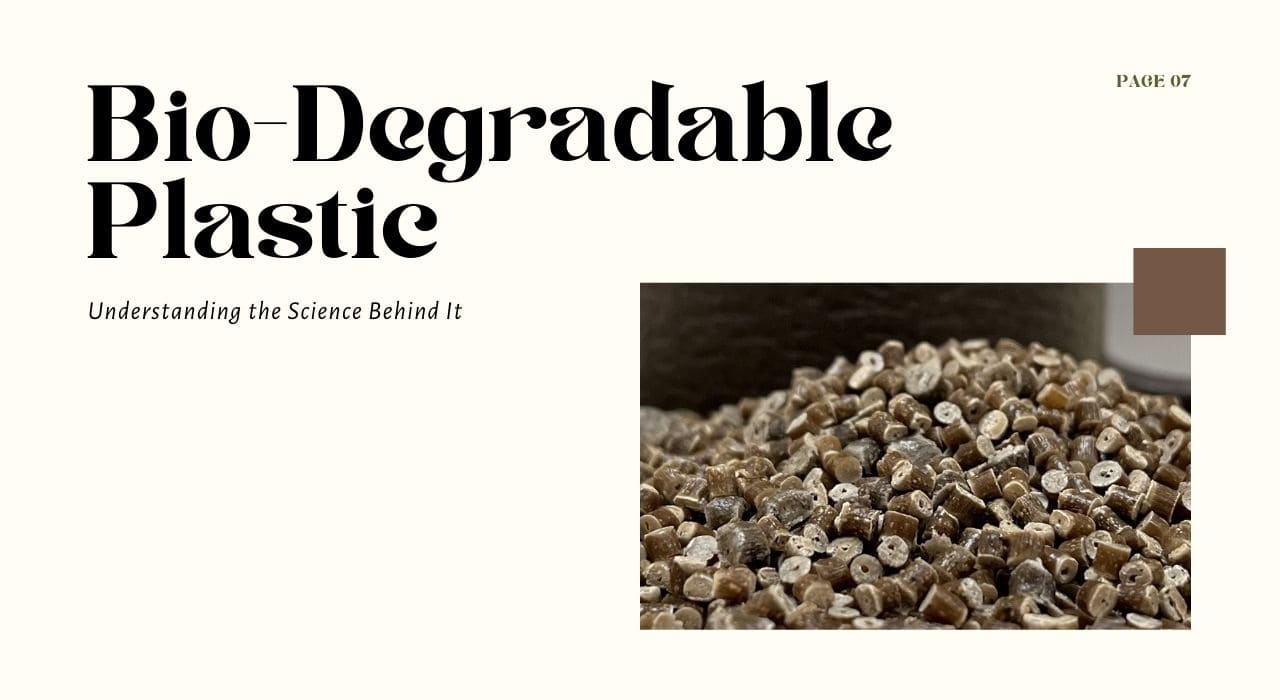Bio-Degradable Plastic - Understanding the Science Behind It

As environmental concerns grow, the use of bio-degradable plastics is becoming increasingly popular. These plastics, made from natural sources or synthetic polymers, are designed to break down quickly and safely in the environment, without leaving behind harmful microplastics. But how exactly do they work?
In this article, we'll delve into the science behind bio-degradable plastic, including the process of degradation and the factors that affect it. By understanding the science behind this innovative material, we can better appreciate its benefits and make more informed choices about its use in our daily lives.
What is Bio-Degradable Plastic?
Bio-degradable plastic is a type of plastic that can break down naturally through the action of living organisms such as bacteria, fungi, and algae. Unlike traditional plastic, which can take hundreds of years to decompose, this plastic can break down within a few months or years depending on environmental conditions.
Bio-degradable plastic is produced using natural sources such as cornstarch, sugarcane, potato starch, and synthetic polymers that are designed to biodegrade. At AirX, the company uses upcycled agricultural by-products such as coffee grounds, sugar bagasse, and coconut husk to manufacture bio-degradable plastic.
The chemical structure of bio-degradable plastic is designed to be easily broken down by microorganisms. The polymer chains that make up this plastic have a lower molecular weight than those in traditional plastic, which makes them more susceptible to hydrolysis and enzymatic degradation.
When bio-degradable plastic is exposed to heat, moisture, and microorganisms, it begins to break down into smaller molecules, which can be consumed by microorganisms. As the microorganisms digest the plastic, they release enzymes that further break down the polymer chains into water, carbon dioxide, and other organic compounds.

While bio-degradable plastic offers a promising solution to the problem of plastic waste, it is important to note that not all of this plastic is created equal. Some types of it require specific environmental conditions, such as high temperatures and moisture levels, to break down.
Others may only partially degrade, leaving behind microplastics that can still harm the environment. As such, it is important to choose bio-degradable plastic products that have been certified by reputable organizations such as the Biodegradable Products Institute (BPI) or the European Bioplastics Association (EBA).
In conclusion, bio-degradable plastic is a promising alternative to traditional plastic that can break down naturally through the action of microorganisms. The chemical composition of is designed to be easily broken down by microorganisms, which makes it a more sustainable option than traditional plastic.
Factors that Affect the Rate of Bio-Degradable Plastic Decomposition
Bio-degradable plastic is designed to break down naturally, unlike traditional plastics that can take hundreds of years to decompose. The scientific process behind the breakdown of this plastic involves the action of microorganisms, such as bacteria and fungi, that break down the polymer chains into smaller compounds. These smaller compounds can then be consumed by other microorganisms, further breaking down the plastic.
Several factors can affect the rate of bio-degradable plastic decomposition. The first factor is the type of material used to make the plastic. These plastics can be made from a variety of materials, such as plant-based sources or synthetic polymers, and the rate of decomposition can vary depending on the material used.
The second factor is the environment in which the bio-degradable plastic is placed. For example, the temperature and humidity levels can play a role in the rate of decomposition. In addition, the presence of microorganisms, such as bacteria and fungi, can greatly impact the speed at which the plastic breaks down.
The third factor is the thickness of the bio-degradable plastic. Thinner plastics tend to decompose more quickly than thicker ones, as microorganisms can penetrate and break down the material more easily.
Finally, the presence of other materials in the environment, such as other plastics or chemicals, can also affect the rate of bio-degradable plastic decomposition. If the environment contains materials that inhibit the growth of microorganisms, the breakdown process may be slowed down.
Overall, the science behind the breakdown of bio-degradable plastic is complex and influenced by several factors. Understanding these factors can help us develop more effective methods for disposing of them and reducing their impact on the environment.
Benefits of Bio-Degradable Plastic
Bio-degradable plastic is a type of plastic that breaks down over time into natural components, unlike traditional plastic that can take hundreds of years to decompose. One of the main benefits of it is its environmental impact.
Bio-degradable plastic does not accumulate in landfills or pollute our oceans. Instead, it can decompose into natural substances that are harmless to the environment. This can help reduce the amount of plastic waste that ends up in landfills and waterways, and help to mitigate the impact of plastic pollution on the environment.
In addition to its environmental benefits, bio-degradable plastic can also have economic benefits. Companies that use bio-degradable plastic in their products may be able to market themselves as environmentally conscious, which can attract consumers who are concerned about the impact of plastic on the environment.
Additionally, some types of bio-degradable plastic, such as those made from plant-based materials, may be cheaper to produce than traditional plastic, as they can use by-products or waste from other industries as their source material.
AirX, a leading bio-based plastic manufacturer, uses by-products such as coffee grounds, sugarcane bagasse, and coconut husks to produce plant-based plastics. By using these by-products, they can decrease competition for land and resources as biomass sources may be diverted away from food and feed production. Additionally, using by-products as a source material can help reduce waste and pollution from other industries.

Furthermore, the unique environmental benefits of using by-products as a source material for bio-based plastic are numerous. For example, coffee-based plastics produced by AirX can biodegrade into biomass, water, and CO2 within 12 months. The products of this process can then be used to nurture the growth of plants, which can then be used to produce another type of bio-based plastic. This creates a closed-loop life cycle that reduces waste and helps to mitigate the impact of plastic pollution on the environment.
In conclusion, bio-degradable plastic has many environmental and economic benefits, including reducing the amount of plastic waste in landfills and waterways, and providing companies with a marketable environmental advantage.
>>> Learn more at: Bioplastic Packaging - Eco-Friendly and Innovative
Contact us
AirX is the world's first carbon-negative bio-material made from coffee grounds.
We specialize in producing bio-based composites using recycled carbohydrates derived from by-products such as coffee grounds, coconut husk, husk, and bamboo. Our goal is to promote sustainability through the use of eco-friendly materials.
We are always here to help and provide the best service possible. If you have any questions or would like to receive advice and feedback directly from our sales staff, please do not hesitate to contact us. You can reach us through:
- Whatsapp: +84 969 742 950
- Email: [email protected]
We look forward to hearing from you!

